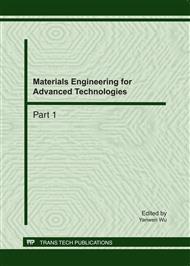p.1463
p.1469
p.1475
p.1480
p.1485
p.1489
p.1496
p.1502
p.1507
Developing a Framework for Integration Manufacturing Systems Based on PLIB Ontology
Abstract:
The model of service resource based on ontology is referred to meet the demand of flexibility and re-configurability of enterprise application resources. PLIB Ontology as new entrants with new business models pour into the business-to-business space, it's increasingly difficult to make sense of the landscape. The paper analyzes the current situation of business environment and business intelligence systems integration at first. Through requirement analysis, we think PLIB ontology is fit for the solution of these requirements (unambiguous description, integration automatically, variant design in real time etc). Then a generic conceptual framework will be developed and a prototype implementation of the generic concepts will be benchmarked in system design of business intelligence systems. It can help confirm the keystone of the construction of business intelligence systems and the direction of system integration.
Info:
Periodical:
Pages:
1485-1488
Citation:
Online since:
June 2011
Authors:
Keywords:
Price:
Сopyright:
© 2011 Trans Tech Publications Ltd. All Rights Reserved
Share:
Citation:


